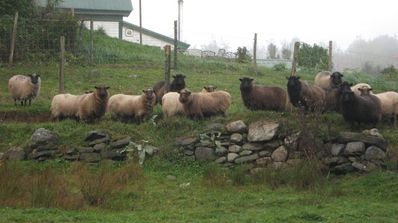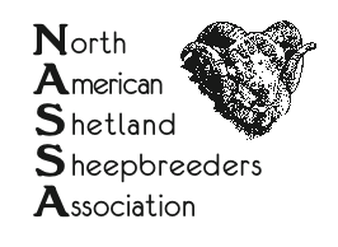Highlights of the Shetland Sheep
•History: This breed can be traced back over a thousand years possibly from sheep brought by Viking Settlers to the Shetland Islands. They belong to the Northern European short-tailed group, which also includes Icelandics and Finnsheep. The first Shetland were brought to the U.S. in 1986.
•Primitive Breed: Shetlands have maintained a natural hardiness. Characteristics include easy lambing, adaptability, longevity and naturally short tails that do not require docking.
•Size: Shetlands are one of the smallest sheep breeds. Rams have beautiful spiral horns and weigh 90-125 lb. Ewes are usually polled and weigh 75-100 lb.
•Wool: Shetland wool is one of the finest and softest of any breed. This soft, durable wool is ideal for the hand spinner as well as for knitting and other handiwork. The wool comes in the widest range of color of any breed. There are eleven main colors ranging from white to black with shades of gray, fawn, and brown in between. There are over 30 distinct marking patterns as well.
Information from the North American Shetland Sheepbreeders Association
•Primitive Breed: Shetlands have maintained a natural hardiness. Characteristics include easy lambing, adaptability, longevity and naturally short tails that do not require docking.
•Size: Shetlands are one of the smallest sheep breeds. Rams have beautiful spiral horns and weigh 90-125 lb. Ewes are usually polled and weigh 75-100 lb.
•Wool: Shetland wool is one of the finest and softest of any breed. This soft, durable wool is ideal for the hand spinner as well as for knitting and other handiwork. The wool comes in the widest range of color of any breed. There are eleven main colors ranging from white to black with shades of gray, fawn, and brown in between. There are over 30 distinct marking patterns as well.
Information from the North American Shetland Sheepbreeders Association
| nassa_brochure.pdf | |
| File Size: | 2565 kb |
| File Type: | |


